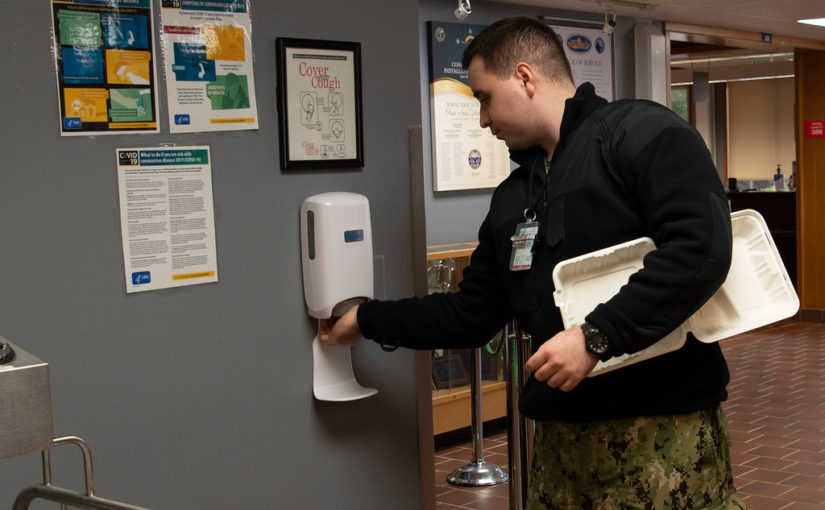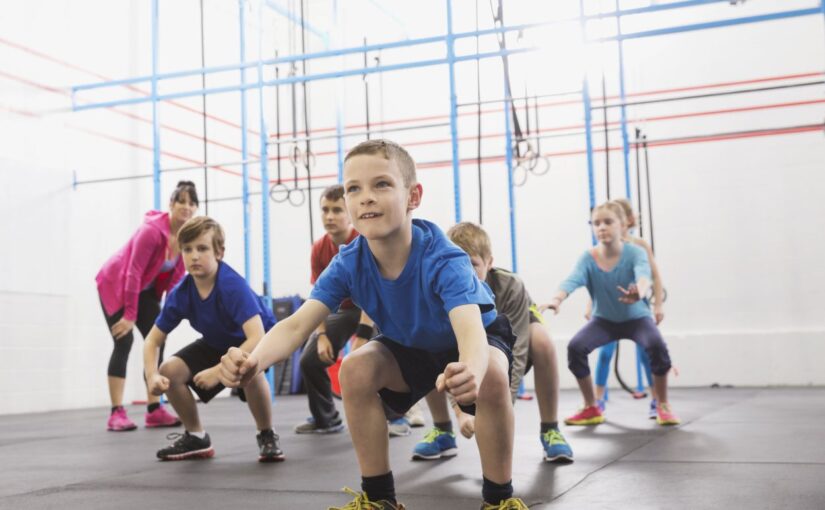Defeating the Invisible Opponent: Sanitization and Bacteria Control In Athletic Facilities
The typical athletic facility is filled with many invisible visitors. The tension that’s built up in pregame moments, the effort exerted in the weight room, the jubilation that’s expended following a come-from-behind victory — those are the intangible clouds that fill the empty space between teammates and coaches.
They are, however, not alone. Bacterium, molds, viral organisms, and other microscopic infectious germs thrive in athletic facilities like weight rooms, locker rooms, and trainer rooms where a small space is repeatedly used by large numbers of people that could be expelling fluids like sweat, spit and even blood.
A group of sports healthcare professionals had similar thoughts when conducting its ‘Infection Risk Reduction Program on Pathogens in High School and Collegiate Athletic Training Rooms’ published by the U.S. National Library of Medicine in October 2019. They knew that athletic training rooms, and other athletic facilities, have a higher prevalence of bacteria, including multidrug-resistant organisms, increasing the risk for both local and systemic infections in athletes. So the group set out to create a hygiene protocol to reduce the bacterial and viral pathogen counts in training rooms.Studying two high school and two collegiate athletic training rooms throughout the 2017-18 academic year, the group found that 24 percent of surfaces were introduced to methicillin-resistant Staphylococcus aureus (MRSA) and vancomycin-resistant enterococcus (VRE), and 25 percent of surfaces were initially detected to have come in contact with forms of influenza.
Athletic administrators have long dealt with bacterial control in an effort to keep their coaches and student-athletes safe from bacterial infections and illnesses.

“Staph infections and things like ringworm were things that previously worried us,” said Scott Garvis, Director of Activities & Athletics of the Ankeny Community School District in Iowa.
“Now we have more to worry about.”
In the wake of the COVID-19 pandemic, those same administrators are forced to step up their tactics in order to ensure the safety of their communities. It’s no longer enough to simply follow the former best practices and procedures of the sanitization of athletic facilities. They must expand and improve upon those guidelines.
In the 2017-18 study, to reduce the bioburden of the tested trainer’s rooms, the group rolled out a three-phase protocol — including the introduction of disinfectant products followed by student-athletes and staff education. The implementation resulted in 94.7 percent bacterial reduction with zero detection of MRSA, VRE, or influenza.
A uniform infection control protocol was found to be effective in reducing bacterial and viral burdens. Now the question is how to put a proper plan together.
Five-Tool Defense System
In his second act of life, former Major Leaguer Adam Everett found himself getting pulled back into a Florida spring training facility, but in a very different manner than his former profession presented. Instead of turning double plays or fielding ground balls, Everett heard of alarming issues stemming from one unnamed MLB team’s spring training facility where a number of players were getting sick and no one knew why.
“The team tried to renovate the space, but due to mold it was recommended that they just raze the building and start fresh,” Everett recalled. “Then the team ran into [Synexis] and we deployed our system. Not only did it save the building from needing renovations, but the following spring training only one player got sick at that time. We made a big difference.”
The same biodefense technology is now used by many Major League franchises both at home and on the road. So what is this game-changing Synexis technology that drew in the 10-plus year MLB veteran?
Synexis is the first and only company, according to its website, to design microbial reduction technology that produces hydrogen peroxide in the same physical state as the oxygen and nitrogen in the air — dry hydrogen peroxide (DHP). Using DHP, its patented microbial reduction technology allows for the natural and continuous reduction of microbial contamination in occupied areas.
The company began out of a need for viable technology that could detect biological agents in real-time like the already-developed tech for chemical and radiological sensors. With the company’s founder, Jim Lee, rooted in a military background — serving as a Major for the U.S. Army in chemical, radiological and biological defense — Synexis was birthed as a line of defense against potential biological threats.
But they quickly found out the number of practical applications that Synexis could positively affect a variety of markets — including healthcare, food service, hospitality, athletics, student housing, and corporate offices among others. Its two devices, the Blade and the Sentry, have shown to impact such viruses and bacteria like salmonella, MRSA, E. coli, influence, and even the current coronavirus.
“There is an obvious heightened awareness to reduce the risk and spread of infectious bacteria in this current COVID-19 pandemic,” Eric Schlote, CEO of Synexis said. “Before bioburdens are even introduced, we are mitigating and reducing the risk. Mimicking what our lungs already do, Synexis is similar to an immune system for a building.”
Furthermore, DHP offers ancillary benefits — effectively reducing molds and fungi in addition to eliminating odors and insects like fruit flies, German cockroaches, bedbugs, and mosquitos.
The Blade is installed inside a building’s duct system and the technology gets to work almost immediately, offering a ‘set it and forget it’ mentality for the users with around the clock protection against the threat of bioburden transmissions that Synexis stated has a 95 to 99 percent reduction rate. The Sentry is a free-standing device equipped with an on-boarding fan that can be mounted on a wall or another out-of-sight position for smaller spaces. Their maintenance team arrives once a quarter for upkeep purposes, but other than that there is no additional labor and no extra duties to perform for the user.
“We’re enhancing all of the cleaning that custodial departments already do in addition to enhancing the environmental safety of players, students, and administrators,” Schlote said.
Preparing for the Unknown
While the products from Synexis certainly are a great tool in the fight against bioburdens in athletic facilities, there are still many other factors to consider when attempting to create a safe space for student-athletes, coaches, administrators, and spectators alike.
Other solutions include Puradigm, a technology that targets and destroys viruses, bacteria, mold, and other pathogens, both in the air and on the surfaces in high-risk areas. Puradigm is a leader in this field and works continuously to create a cleaner safer environment by focusing on active 24/7 prevention that eliminates viruses and other pathogens that are the source of potential illnesses and outbreaks. Enhance Mats has offered this technology for both odor and infection control at athletic facilities across the country. Given our new environment, Puradigm, can be valuable in all occupied areas to provide confidence that student-athletes, coaches, staff, and spectators are safe and secure.
Garvis said even the best of measures prior to this current coronavirus pandemic need to be reviewed and retooled.
“I know in our district, we had our custodial staff disinfecting the building daily,” he said. “But it can’t just be spot-checking anymore. It’s more important that we are taking daily measures and making all of our staff aware of new protocols.”
These new measures, Garvis said, might take a page out of their wrestling coach’s playbook as that sport, in particular, has a heightened awareness of the spread of infections. Other measures Garvis expects is for teachers and administrators to have a list of daily duties — wiping down their respective classrooms and offices at the end of the day — to aid the custodial staff.
He wondered aloud if the way we view athletic events and public spaces will shift to a hands-off environment. Touchless hand dryers with UV lights? Contactless ticketing? A shift in how concessions are made available? Putting protocols and procedures in place, however, must be done with contingencies as athletic facilities await further notice from not only state and federal authorities, but CDC and WHO guidelines as well.
“There are a lot of things to consider. We are left waiting in a sense until we have more guidance from the CDC and FDA,” Garvis said. “At the end of the day, it’s about keeping everyone safe.”





